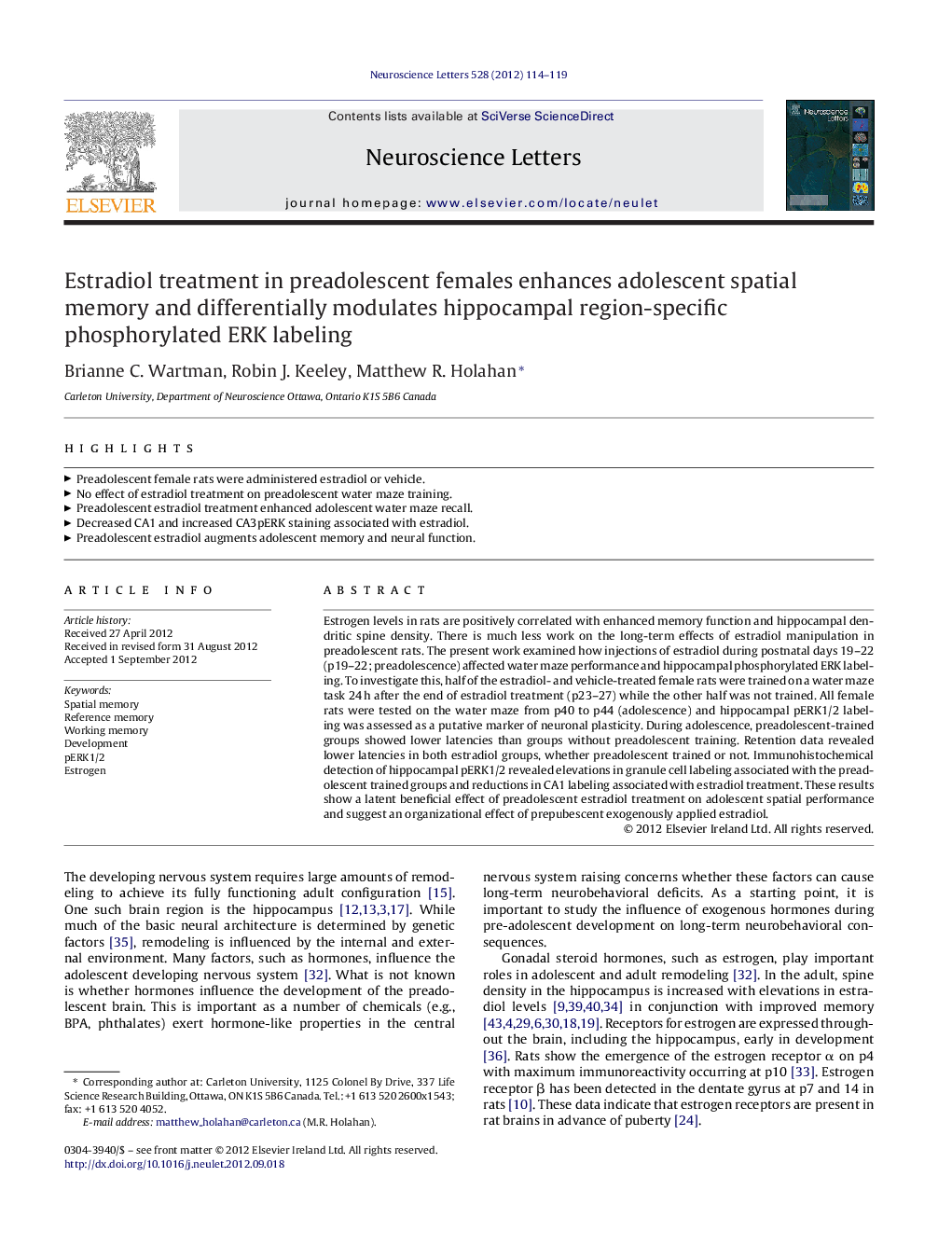| Article ID | Journal | Published Year | Pages | File Type |
|---|---|---|---|---|
| 4344235 | Neuroscience Letters | 2012 | 6 Pages |
Estrogen levels in rats are positively correlated with enhanced memory function and hippocampal dendritic spine density. There is much less work on the long-term effects of estradiol manipulation in preadolescent rats. The present work examined how injections of estradiol during postnatal days 19–22 (p19–22; preadolescence) affected water maze performance and hippocampal phosphorylated ERK labeling. To investigate this, half of the estradiol- and vehicle-treated female rats were trained on a water maze task 24 h after the end of estradiol treatment (p23–27) while the other half was not trained. All female rats were tested on the water maze from p40 to p44 (adolescence) and hippocampal pERK1/2 labeling was assessed as a putative marker of neuronal plasticity. During adolescence, preadolescent-trained groups showed lower latencies than groups without preadolescent training. Retention data revealed lower latencies in both estradiol groups, whether preadolescent trained or not. Immunohistochemical detection of hippocampal pERK1/2 revealed elevations in granule cell labeling associated with the preadolescent trained groups and reductions in CA1 labeling associated with estradiol treatment. These results show a latent beneficial effect of preadolescent estradiol treatment on adolescent spatial performance and suggest an organizational effect of prepubescent exogenously applied estradiol.
► Preadolescent female rats were administered estradiol or vehicle. ► No effect of estradiol treatment on preadolescent water maze training. ► Preadolescent estradiol treatment enhanced adolescent water maze recall. ► Decreased CA1 and increased CA3pERK staining associated with estradiol. ► Preadolescent estradiol augments adolescent memory and neural function.
